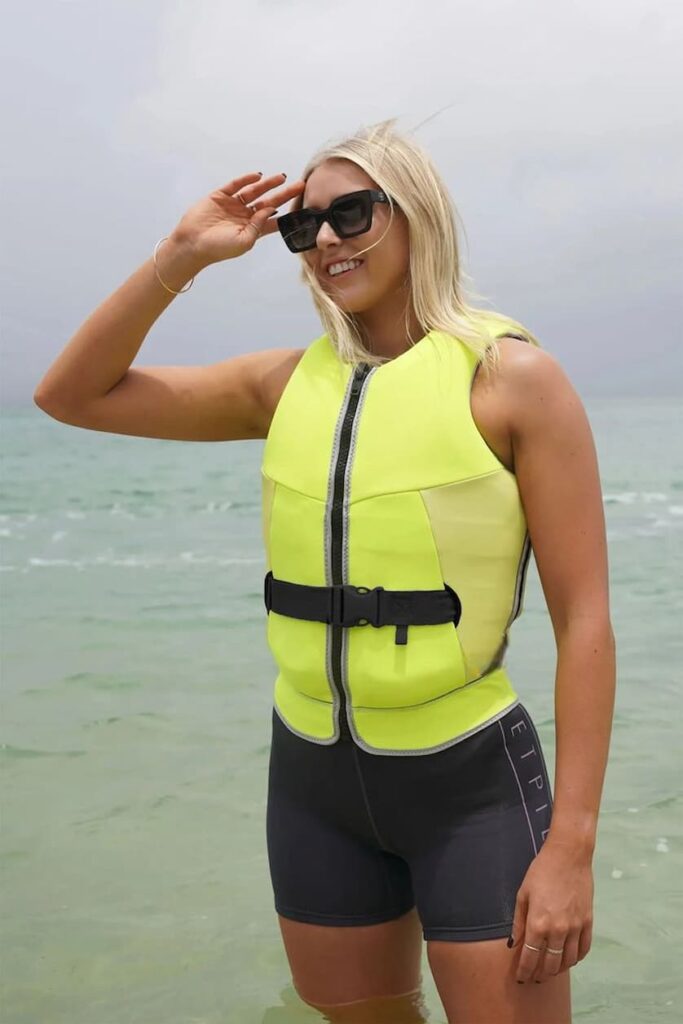Boat trips provide the perfect fun under the sun, so it’s something you should give a go at least once in life. They are a blast and a great way to help people reconnect, get some vitamin D and just have fun. The simple thought of being able to cruise around a lake, sea or river on a sunny day is something that a lot of people want to experience. But, whether just enjoying the scenery, fishing or planning to take a dip in the water, being prepared for anything and staying safe is paramount.
Contents
How to Stay Safe?
Wear a PFD Life Jacket

A little preparation before going on a boat trip goes a long way in making your day perfect. And the first thing everyone should have and wear while on a boat trip is a PFD safety life jacket. Regardless of your swimming ability, you should always wear a life jacket because accidents can happen to anyone anywhere. But what does PFD stand for in life jackets?!
Unlike regular life jackets, the PFD or personal flotation device jackets give more buoyancy which is essential in helping you stay afloat in water.
The PFD life jacket is an essential gear for everyone not only for occasional boaters like you. Generally speaking, you can choose between two types of PFD jackets: standard and inflatable. Out of the two, the standard ones are the most commonly used ones among recreational boaters, kayakers and canoers among others. These jackets resemble vests and usually their bounciness is created by the contained foam.
They are available in different levels ranging from 50 to 100 with the higher the level the greater the flotation and stability. The pros of these jackets are that they are ready to use and don’t need any activation to provide flotation. They are versatile and can be used for different water sports and by swimmers with different swimming skills. Usually, most of these models have pockets for stashing some essentials like sunscreen, emergency gear, fishing accessories or anything you like.
The inflatable types of jackets include a vest and waist pack and they are mainly used for stand-up paddle boarding, canoeing and kayaking. As the name suggests, these jackets need to be inflated prior the use which doesn’t make them the most common choice. This can be done two ways: manually by pulling a cord that activates a CO2 gas cartridge, and automatically which means that the jacket will inflate automatically when submerged in water. They are available at around level 70 or higher depending on their design and buoyancy.
Remain Still and Seated
Remaining still and seated when the boat is in motion is of vital importance to prevent accidents like falling in or off the boat and injuring yourself. Given the fact that you’ll be in open water, waves, speed changes and turns are quite common and sometimes unpredictable, so staying seated in your place is paramount not only for preventing hurting yourself but also for creating the needed balance. For increased stability, hold on to the boat rails and sit tight to reduce any risks of accidents. Staying risk-conscious in such situations is always better than being and acting immature.
Stay Hydrated

Staying prepared when on a boat is essential for your overall well-being and health, and one of the main things you can do to avoid any inconvenience is to stay hydrated. Dehydration is quite common in such situations because of sun exposure, so drinking plenty of water throughout the trip is paramount. Doing this is possible by choosing a good quality bottle. Choosing the right model has never been easier thanks to the array of long-lasting water bottles ranging in type, material and size.
Speaking of which, you can choose between insulated, glass and straw/spout water bottles out of which the stainless steel are a great choice if you’re after keeping the right water temperature regardless of the weather conditions. Coming in a range of models, these bottles seem to be one of the most functional, convenient and easy-to-use products that can keep your water fresh and cold throughout the day.
When searching for the right model, choose one that has double-wall insulation; that way you can be sure that your water or other drinks will stay cold for up to 24 hours. A leakproof lid is also a good thing to look for in such bottles, as well as a bottle with wider opening which allows for easy cleaning. Additionally, the wider opening will allow you to add ice cubes inside it to prolong the drink’s coolness.
Tip: Have spare water bottles in the boat’s storage box so you don’t run out of water and risk dehydration.
Be Aware of the Safety Equipment’s Location
Whether having a licensed captain on the boat or planning to be the captain, knowing the location of the boat’s safety equipment is paramount. Once you enter the boat, the captain or the authorised personnel should show you where the life jackets are kept. You should also know where fire extinguishers, emergency exits and flares are located because, in case of an emergency, this could be life-saving.












